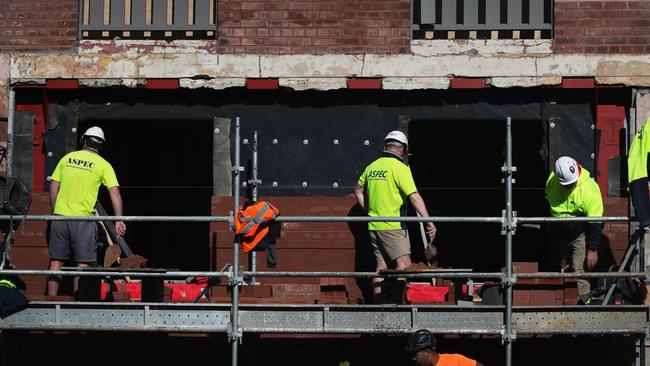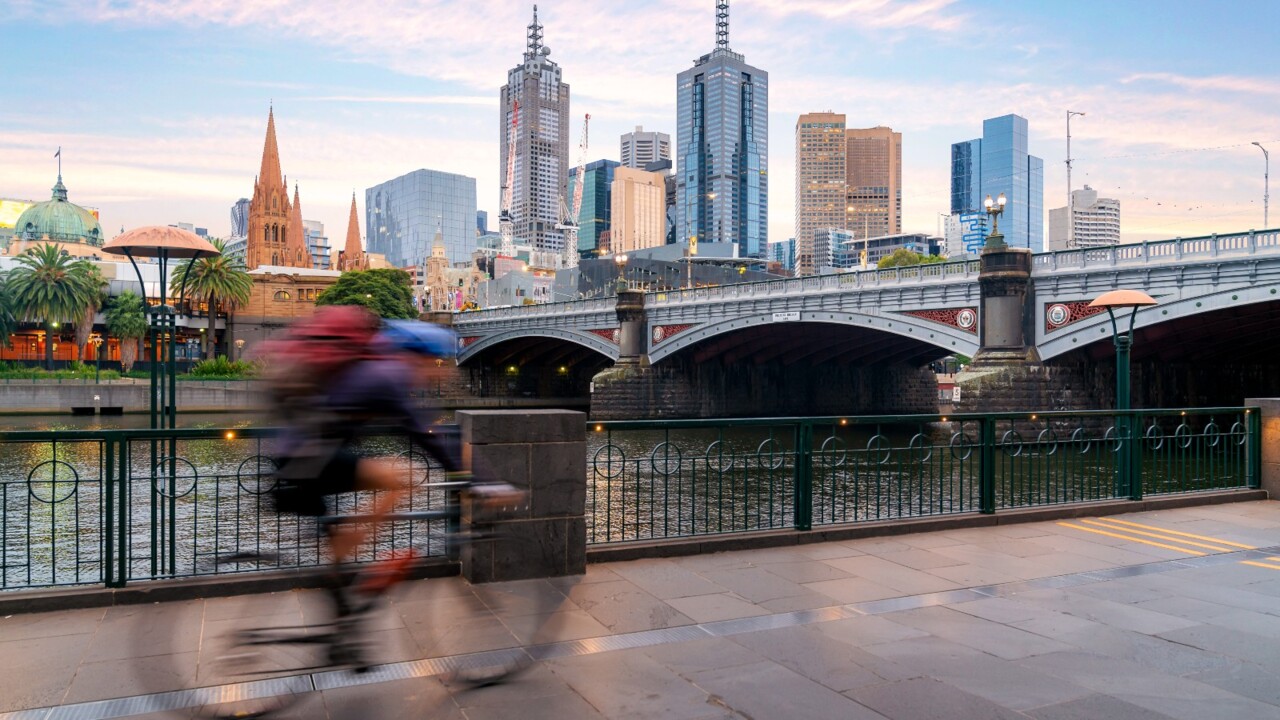Build fast or hit crisis on home front, banks warn
A new home would have to be built every two minutes to accommodate current population growth and the immigration intake, according to industry analysis.

A new home would have to be built every two minutes to accommodate current population growth and the immigration intake, according to industry analysis of official statistics that warn the rapidly increasing housing shortfall is a driving force of inflationary pressures.
The startling illustration of the housing problem, which major banks declared was the largest policy crisis Australia faced, came as July 1 marked the start of a five-year promise by the Albanese government to build a million new homes.
A record 547,300 migrants arrived in Australia in 2023, according to ABS data published last month. Based on official statistics of 2.5 people per household, 218,920 houses would have had to be built to accommodate the influx. This equates to 600 homes built every day or one every 2.4 minutes. This is before natural population growth is taken into account.
As cost of living dominated parliamentary question time on Monday, Jim Chalmers attacked the Greens for teaming up with the opposition to sink Labor’s proposed tax breaks aimed at boosting incentives for developers to build more rental homes.
“The Greens voted for fewer homes and higher rents and more homelessness,” the Treasurer said. “If they really cared about housing, they would vote with Labor rather than vote with the conservatives.”
While housing affordability remains a hot-button issue for voters, Dr Chalmers joined Anthony Albanese and other ministers in spruiking a range of cost-of-living measures starting in the new financial year, including tax cuts and a new round of energy subsidies that will be extended to all households, regardless of need.
Academics dispute a direct correlation between the net overseas migration intake, including temporary residents, and the housing shortfall.
However, the housing industry has declared the shortfall is probably an underestimation.
Housing Industry Association chief economist Tim Reardon said 120,000 homes would have to be built to accommodate natural population growth and replacement of ageing stock before migration was even taken into account.
According to official statistics, only 163,836 new dwelling were constructed in 2023 – an 11-year low and 10.4 per cent down on the previous year.

Net overseas migration has been falling since last year with Home Affairs Minister Clare O’Neil committed to halving numbers in the 2024-25 financial year. But government policies have so far failed to reduce the ambition of curbing the intake to 375,000 by June this year.
NAB chief executive Andrew Irvine last week warned that the housing crisis was the single biggest policy issue facing Australia, labelling the rate of new dwelling construction “woeful”.
“Often the narrative is the demand side but we’ve got to fix the supply side. The rate of new construction in Australia is woeful,” Mr Irvine said.
“And it’s a plethora of things that need to be addressed, from planning permission to taxation to new methods of housing modularisation to more innovation around footprints.
“We need 10 per cent more homes, more dwellings, to house the people we have, never mind the migrants coming to our shores,” Mr Irvine said.
The Commonwealth Bank predicted that the housing shortage would push first home buyers further out of reach, claiming prices would rise by 7 per cent in 2024 and 5 per cent in 2025.
CBA senior economist Belinda Allen said the country was still not building as many homes as needed to meet demand, suggesting that prices would continue to rise faster than incomes.
Opposition housing spokesman Michael Sukkar said “Labor’s housing crisis is getting worse with record levels of migration and fewer homes being built. It’s never been more difficult for first home buyers or renters.
“Labor’s Big Australia shows no signs of slowing down and there’s no way enough homes can be built to accommodate these record levels of migration.”
Housing Minister Julie Collins said the Albanese government was delivering the most significant housing reforms in a generation after a decade of little action from the former Coalition government.
“Our comprehensive Homes for Australia plan is backed by $32bn in new housing initiatives that will help us meet the national target of building 1.2 million homes by the end of the decade,” Ms Collins said.
“It is ambitious because we need to be ambitious as a country. We inherited significant housing challenges after a decade of inaction by the former Liberal government. Turning that around will take a co-ordinated approach by all tiers of government, the construction sector and community housing providers.
“We are all working together to meet this shared target, because we know that adding to supply is the best way to address housing affordability.”
Home prices in Perth, Brisbane and Adelaide are up 65 to 70 per cent since the start of 2020, sparked by the Reserve Bank’s slashing of borrowing costs to the lowest levels, and supercharged by a post-lockdown economic boom that drove a frenzy of buying.
Housing affordability is at its worst in Sydney, where home values are up more than 30 per cent over the past 4½ years, according to CoreLogic figures.
In the country’s most populous city, an average two-income household hoping to buy will need to dedicate more than a third of pre-tax earnings to service a typical mortgage, according to analysis by CBA – the highest in data stretching back to the late 1990s, and well above the previous peak of 25 per cent in 2008.
That assumes both people are working full-time on average wages, suggesting single-income families would struggle to break into the market without a substantial deposit, most likely assisted by family.





To join the conversation, please log in. Don't have an account? Register
Join the conversation, you are commenting as Logout